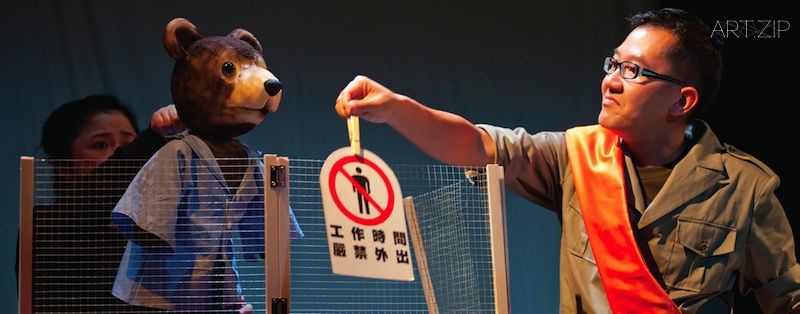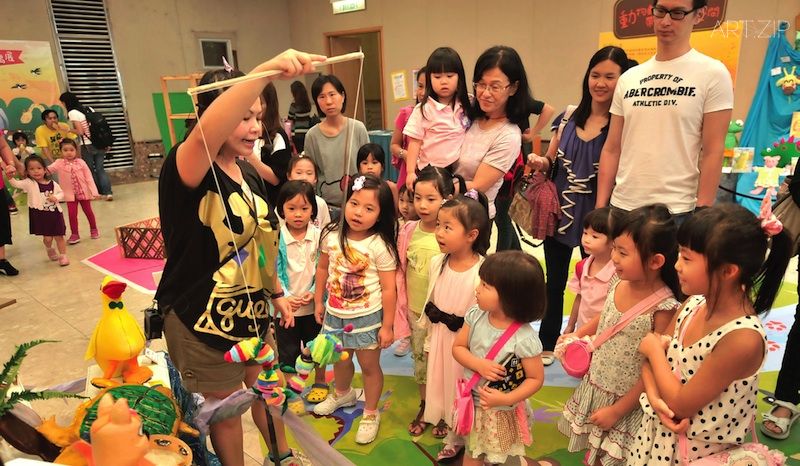
The origins of Puppets and Shadow Puppets
Chinese puppetry that was born out of the funerary culture and developed from pottery figurines and wooden figurines has gone through a tortuous course. In 1983, a wooden figurine buried with the dead in a tomb of Han dynasty was excavated in Lai Xi, Shandong Province, it has flexible joints for sitting and standing, and its hands can also move. Such an ingenious wooden craft, of course, is not just an ordinary funerary object, it most likely had been made into a prop or a “stand-in” for real man, and it is obvious that it needs to perform actions before serving as a funerary “ritual implement”. Gradually, puppetry steps out of funeral into entertainment undertakings.
In the West, a puppet is used in sacrifice as the “medium” towards the spiritual world, which is similar to the “theurgy for revival through shadow” in the court of Han Dynasty in ancient China. The puppet, at the outset, is the “medium” towards the mysterious world or “theurgy for revival”, then turns into a religious show, and at last becomes a stage art.
“Stand-in” and “medium” are the original functions of Chinese puppets and shadow puppets, which are also the important elements in the contemporary stage art.
木偶、皮影的原始特質
由陶俑、木俑變成偶戲,脫胎自陪葬文化的中國 木偶走過一條曲折的道路。1983年,山東萊西 出土的一個漢墓陪葬機關木俑,關節可靈巧坐 立,並手部可動作。精巧木工技術,當然不止是 一件普通陪葬品,極可能已成一件道具,一件真 人“替身”,明顯先需要表演動作,才作陪葬的“禮 器”。一步步,木偶戲由葬禮化身娛樂事業。
西方,木偶在祭祀中,是通向靈界的“媒介”,與 中國漢朝宮庭“弄影還魂術”一樣。開始時,是通 向神秘世界的“媒介”,由“還魂”法術,化作宗教 表演,最終成為舞臺藝術。“替身”與“媒介”是中 國木偶、皮影的原始功能,也是當代舞臺藝術 的重要元素。
——————————-
Puppetry and Shadow Puppetry are not Just Children Theater
In Dutch artist Duda Paiva’s monodrama Morningstar, a lifter mechanic accidentally drops into the underworld and is possessed by a “rubber puppet” demon, the performer acts both the puppeteer and the mechanic simultaneously; the “puppet” originally is a “stand-in” for demon, and it is also a “medium” for acting the demon. But, the mechanic finds that in fact he himself is able to control the demon in place of the puppeteer. What’s more, man can replace the demon, and even worse than demon.
If this is not a monodrama; if the demon is not the prominent “puppet”; if the performer does not sometimes act three roles and sometimes act one; if the “puppet” of the “stand-in” is not changed from being controlled to being destroyed, and ultimately man becomes the demon, it is inevitable that the avant-garde stage will lose its charm. It is the philosophical meaning of “stand-in” and “medium” that give status to puppetry and shadow puppetry in the contemporary avant-garde stage. Of course, puppetry and shadow puppetry are not just children’s theater; or rather, just because of these functions, they become an important part in the contemporary universal education, counseling and psychotherapy. But undeniably, the emergence of modern puppetry indeed started from children’s theater.
In the 1920s, European cultural and academic circles were so confident of the importance of the stage art for children’s education and tried to carry out artistic education in order to cultivate children audience’s artistic sentiments. Thereupon, not only did the children’s theater come into being, but also the puppet, owing to its distinctive shapes and colors as well as the children’s fantasy world where everything is animate, became the most popular prop in children’s theater. Children’s theater is an important part of modern puppetry but not the whole. In the history, China’s puppetry also has made great progress, in the 1930s, Yu Zheguang, the “father” of modern puppet in Shanghai, had already applied puppets to children’s theater and education.
木偶、皮影不單只是兒童戲劇
荷蘭藝術家杜達•派瓦(DudaPaiva)的獨腳戲《晨 星 ( M o r n i n g s t a r ) 》,升 降 機 技 工 誤 降 地 府 ,被 “ 橡 膠偶”魔鬼附身,演員同時飾演“偶”的操控者及技 工,“偶”原是魔鬼的“替身”,也是表演魔鬼的“媒 介 ” 。但 ,技 工 發 現 原 來 自 己 可 替 代 戲 偶 操 控 者 , 控制魔鬼。人最終更可替代魔鬼,人比魔更甚。
如果,這不是獨腳戲;魔鬼不是形象突出的“偶”; 如 果 飾 演 不 是 一 分 為 三 ,時 分 時 合 ; “ 替 身 ” 的 “ 偶 ” 不是由被控制到被消滅,最終“人”才是魔,前衛舞 臺 必 然 失 色 。“ 替 身 ” 、“ 媒 介 ” 的 哲 學 性 ,成 就 了 木 偶、皮影在當代前衛舞臺的地位。木偶、皮影,當 然不單單是兒童劇。更因這些功能,成為當代普 及教育、諮詢輔導、心理治療的重要成份。無可 否認,現代木偶出現的確由兒童劇場開始。
二十世紀二十年代,歐陸文化、學術界深信舞臺 藝術對兒童教育的重要,開展以培養兒童觀眾 精神文明的藝術場所。應運而生的不單止是兒 童劇。木偶因其造型、色彩突出,加上兒童萬物 有靈的幻想世界,成為兒童劇最受歡迎的表演 工具。兒童劇是現代木偶戲的重要部份但不是 全部。歷史上,中國也不甘後人,三十年代上海 現代木偶之父虞哲光先生,已運用木偶進行兒 童劇及教育工作。


